Embarking on a culinary journey through Moldova is like stepping into a hidden treasure trove of flavors and traditions. Moldovan food has undergone many changes over time, and the history and way of life of the local people have had a great contribution in shaping the recipes and culinary specialties of the region.
Moldovans were brought up to work hard. In the past, the country was intensely agricultural, with land worked by peasants. For this reason, people most often prepared what they grew themselves (wheat and corn) with vegetables from their own gardens. Therefore, Moldovan food and its traditional dishes had to be nutritious and high in calories to keep them energetic on the hill during the day.
Here are a few favorite Moldovan foods that you’ll find when you visit, especially if you stay in one of our rural guest houses where you’ll enjoy home-cooked traditional dishes together with a glass of Moldovan wine.
Plăcinte
The culinary adventure in Moldova often begins with plăcinte, or pastries filled with a variety of fillings: cheese, potatoes, cabbage, meat, cherries, cherries or pumpkin. This Moldovan dish that best symbolises the Moldovan people and traditions. Plăcinte can be served with sour cream and go wonderfully with a local red or white wine.
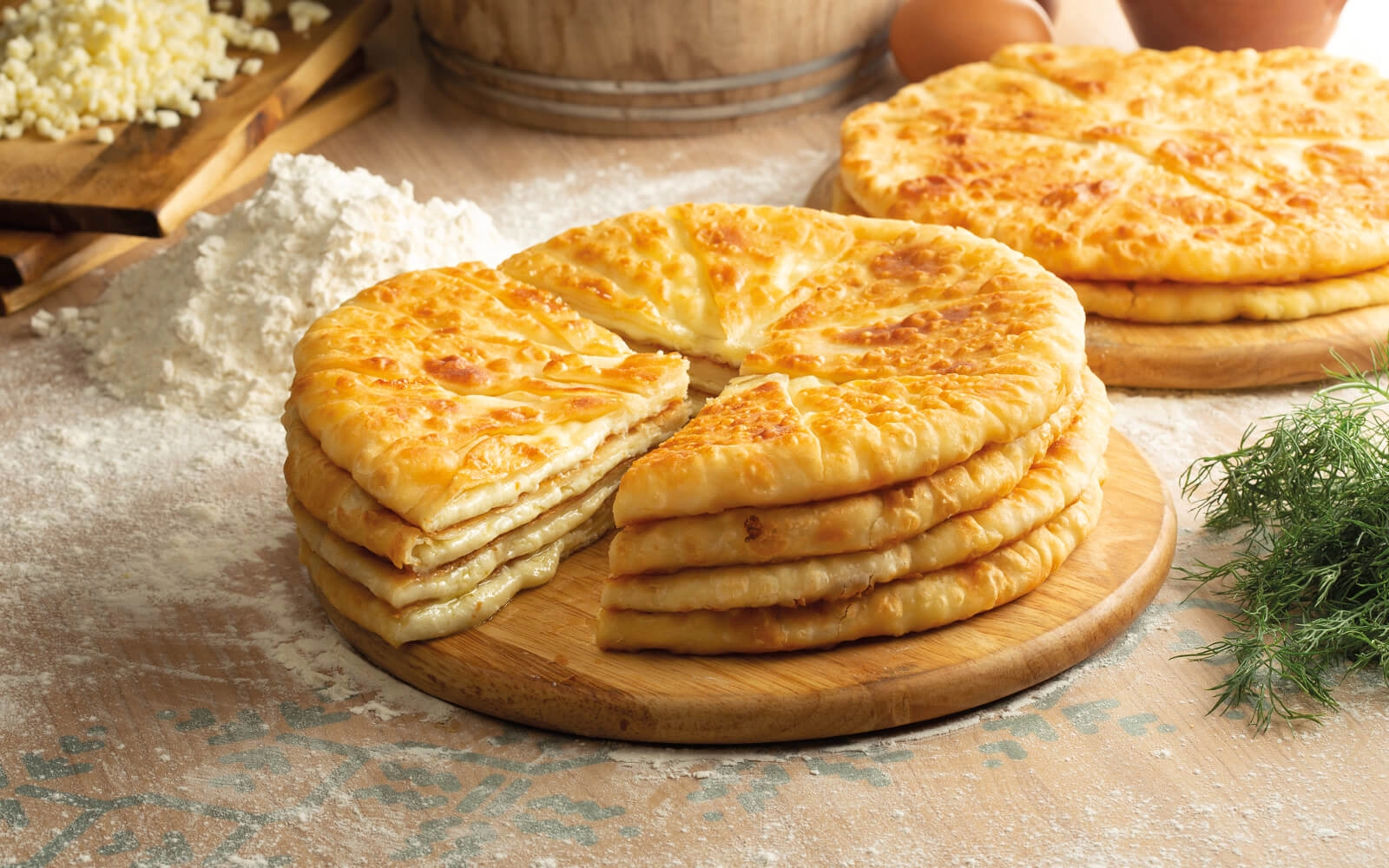
Mămăligă and Brânză
Mămăligă, a corn-based polenta, is also a popular Moldovan food and one of our beloved traditional dishes. Cornmeal was easily produced in households using hand-operated grain grinders, so mămăliga was the go-to side for all kinds of dishes, sometimes instead of bread.
Mămăliga is usually served with fresh or salted cow’s or sheep’s cheese (brânză), sour cream, and pork roast (braised port). However, sometimes it can be served with a portion of scrambled eggs or vegetable stew to make it a hearty vegetarian dish.
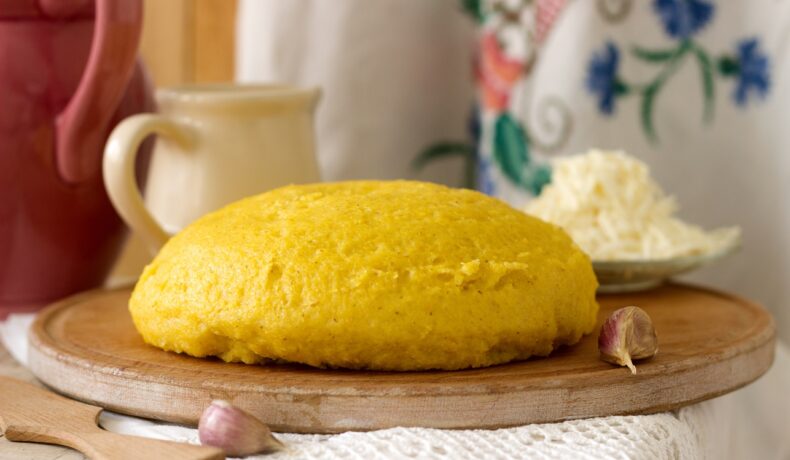
Zeamă
Zeamă is a traditional homemade chicken soup that is also popular in Romania. The soup starts with a chicken broth to which vegetables and noodles are added. It is often served with sour cream and chili peppers for contrasting flavours.
Zeamă is not only a culinary delight that Moldovans love to eat, but it is also a natural remedy for colds as it is very nutritious and healthy.

Sarmale
Sarmale are stuffed cabbage rolls where fresh or fermented (like sauerkraut) cabbage leaves are filled with a rice mixture, to which vegetables and minced pork or beef are added. They can also sometimes be made with grape leaves. Moldovan sarmale often differ from their counterparts in neighbouring countries in that they are smaller and more delicately flavoured. Moldovan sarmale are served with a dollop of sour cream, which enhances their taste and flavour.

Grilled Meats
Moldova’s meat delicacies are known for their pot roasts, skewers and grilled meat. Besides the tradition of eating lamb at Easter and pork at Christmas, Moldovan dishes that include meat are numerous because this was the food that was easily available. Moldovans raised pigs, cattle, chickens, goats and sheep at home, and eating meat was common in everyone’s homes.
Micli (minced meat with spices) and sausages (minced meat in a meatball) are the most common dishes eaten by locals. Served with mămligă (a kind of polenta, see above) is are a classic Moldovan food combination. Another favourite type is meat grilled on skewers marinated in wine (every householder has his own recipe) and this meat dish is often prepared and enjoyed outdoors with friends and family.
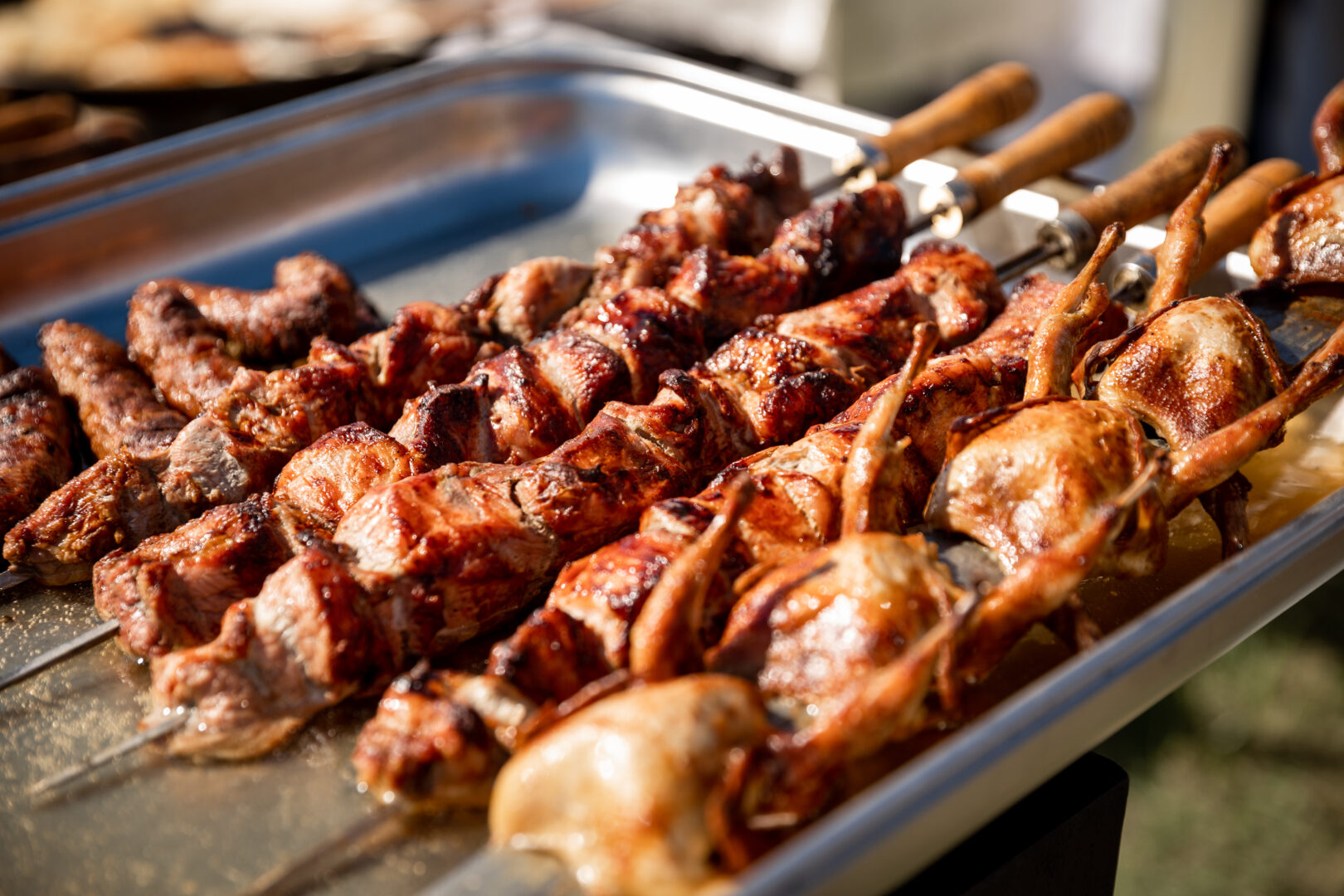
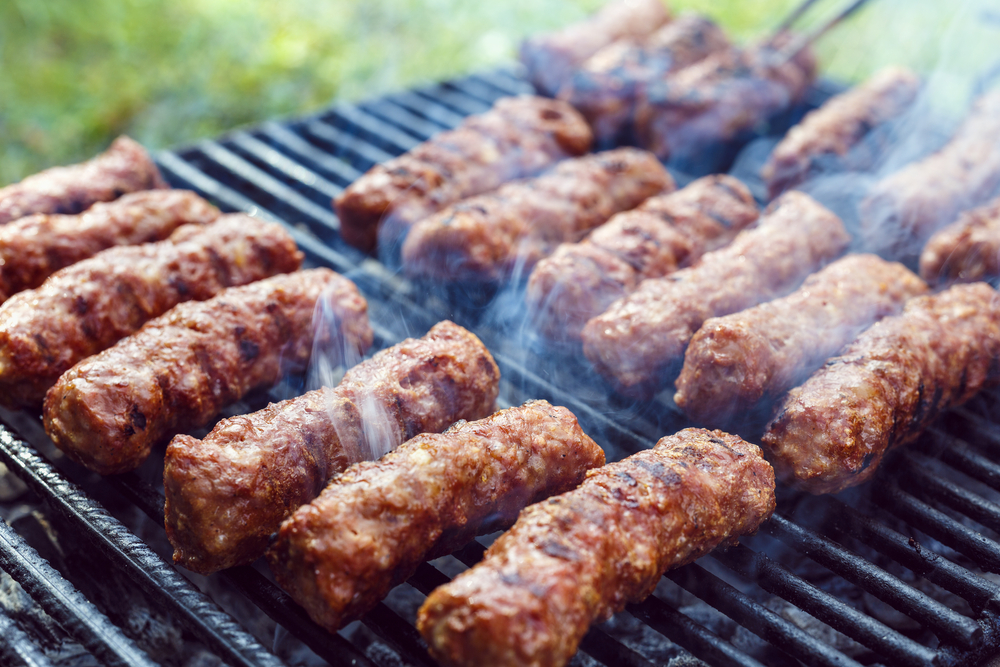
Desserts
No culinary journey in Moldova is complete without tasting the traditional Moldovan dessert called “Cușma lui Guguță” – a dessert made of pancakes filled with sour cherries and layered with cream. In certain regions of Moldova, “papanași” or “brânzoaice” (fried cheese doughnuts) are also commonly prepared, served with jam and sour cream. “Cozonac” (sweet bread with nuts and raisins) is another widely enjoyed dessert, resembling a sweet and aromatic bread, often baked during Christmas and Easter holidays.
Some historical details…
In our culture, especially among adults and the elderly, there is a joke about “sugar bread,” which was the only dessert that could be prepared at home. Moldova went through a tough period, and its residents had to make do with limited resources and ingredients.
Additionally, in families with many children, everyone was taught to share their food strictly to ensure it was enough for everyone and to be very economical with food products.

Wines
The history of wine production in Moldova spans almost 7,000 years. The domestication and cultivation of wild grapevines likely occurred during the Cucuteni-Tripolye culture, one of the oldest civilizations in Europe, which included the territory of present-day Republic of Moldova and has continued to the present day. The favorable terrain allowed for cultivation and production.
Moldova’s rolling hills and fertile soil (chernozem) have created ideal conditions for grapevine cultivation, along with the improvement of winemaking skills over time. Moldovan wines, especially indigenous varieties such as Fetească Neagră, Rară Neagră, Feteasca Albă, and Feteasca Regală, have gained international recognition for their distinct flavors and exceptional quality. These wines are sought after and appreciated by every tourist who visits Moldova and explores the wineries for a unique wine tasting experience.
From February 2020, Moldova is part of the Iter Vitis cultural route, and it stands as a wine tourism destination together with France, Italy, Greece, Spain, and other titans in the global wine production industry. Four Iter Vitis Moldovan Wine Routes have been developed in Moldova in each of the country’s main wine and spirits regions – Codru in the center, Ștefan Vodă in the southeast, Valul lui Traian in the south and the Divine route in the north of the country.
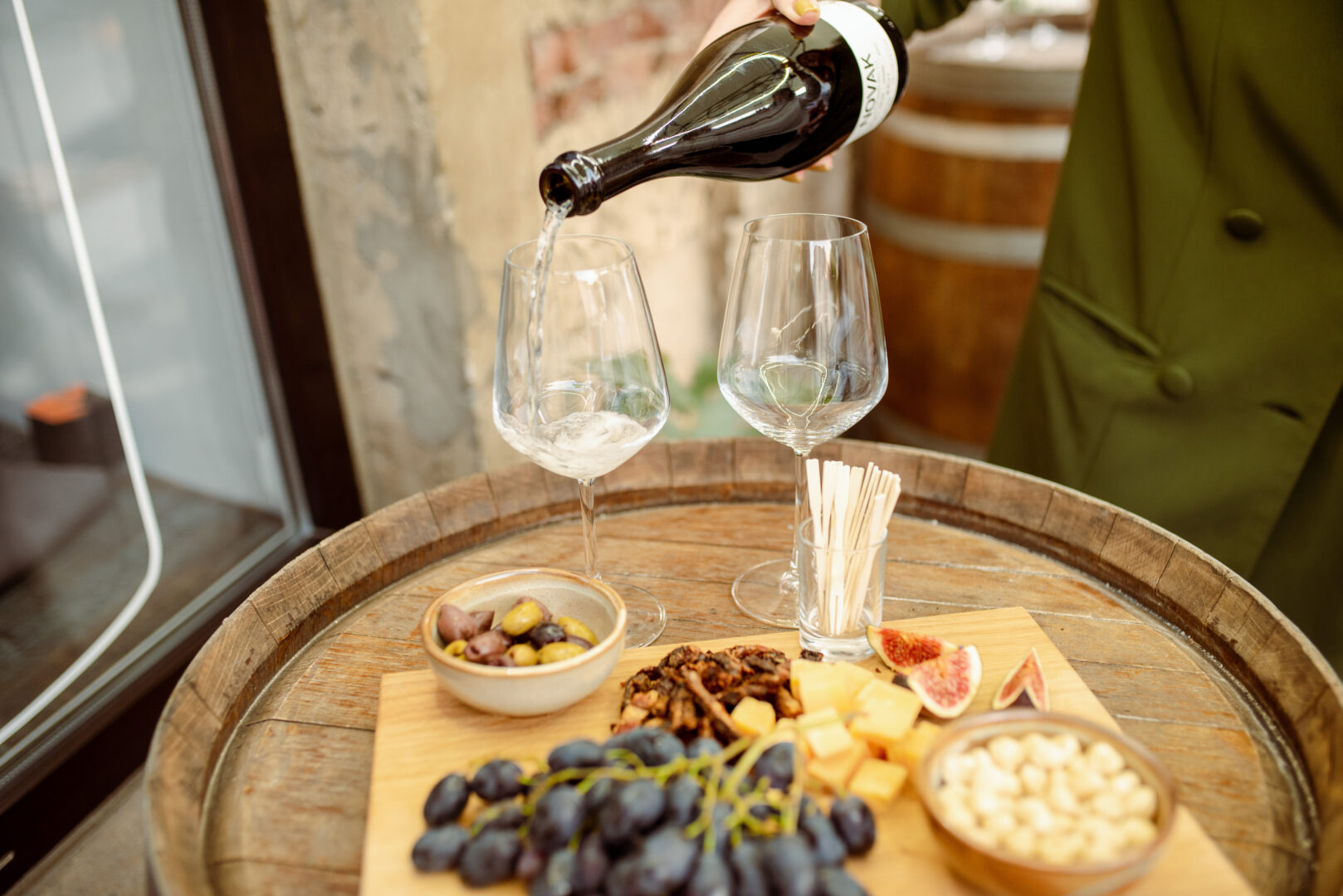
Exploring the food of Moldova is not just a pleasure, it’s also a journey into our historical and cultural heritage. Each traditional dish represents a chapter in the culinary story of a nation and of homemakers who have lovingly preserved traditions, cooking with great care and devotion for their families. Moldovan cuisine is prepared from natural and healthy ingredients, and as a people, we strive to maintain and pass down our parents’ recipes to future generations, ensuring that the culinary culture lives on for many generations to come!
We look forward to welcoming you soon to try one of our many beloved Moldovan traditional dishes!
